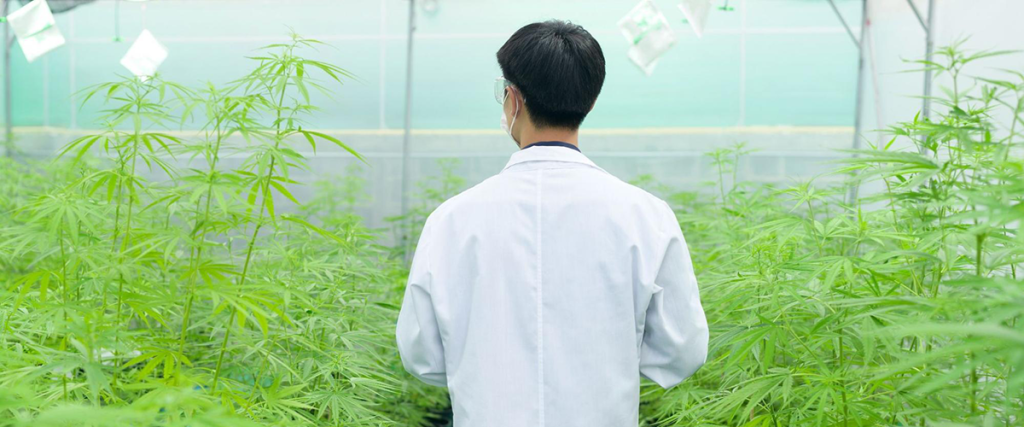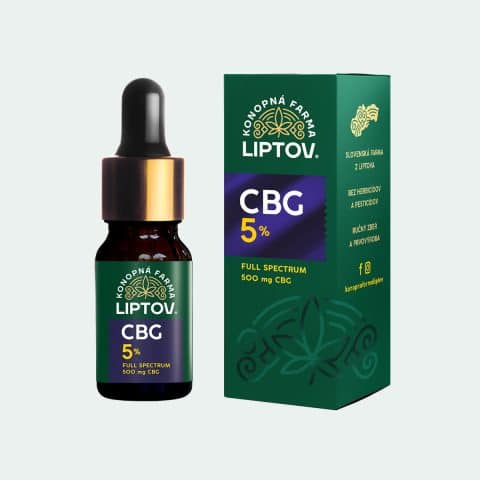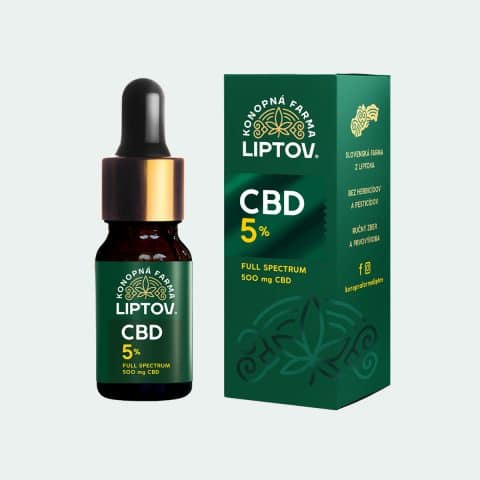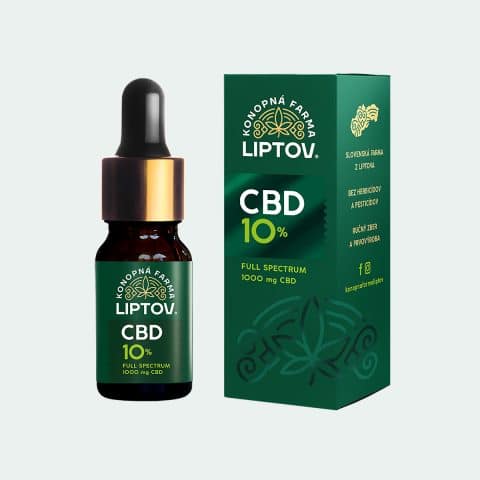What are cannabinoids and what cannabinoids do we know?

The cannabis plant is nothing new on our market and in the world. Cannabis has been used centuries ago, for example in traditional medicine and Ayurveda, to help relieve various diseases that plagued people at that time. Of course, centuries ago, times were not developed enough to be able to study its individual components, which include, for example, cannabinoids. So what are cannabinoids, how are they divided and how do they affect our health? If you’re interested in the answers to these questions, find out more about cannabinoids below.
What are cannabinoids?
The fact that cannabis has beneficial effects on human health is confirmed by the fact, which we have already mentioned, that it has been used in traditional folk medicine for centuries. But nobody may have known the reason for this. Cannabinoids and their discovery are attributed to a certain Mr Robert S. Cahn, who worked as a chemist. This British chemist determined the fully formed structure of CBN (cannabinol) in 1940. The next cannabinoid to be discovered was CBD, which was discovered by the American chemist Roger Adams. This was followed by Mechoulam and his team with the isolation of THC and so on. Basically, there is a lot of research about cannabis at the moment, where its potential and effects on human health are being investigated. But let’s move back to the cannabinoid.
If we were to simply answer the question of what cannabinoids are, we could call them chemical compounds found in cannabis plants, and in particular in the Cannabis sativa species, or in Slovak, Konopa sativa. They are complex molecules that have various effects on the human body as they interact with the endocannabinoid system of our body. The endocannabinoid system is part of the nervous system and has an effect on various bodily functions, including mood regulation, sleep, appetite and memory.
There are more than 460 different known and lesser-known compounds in the cannabis plant, and of these, up to 66 could be classified as cannabinoids, as they have a 21-carbon structure, which is characteristic of a cannabinoid.
Of these, we could highlight two of the most well-known ones, whose names you have surely already encountered. The first most well-known cannabinoid is CBD, a very popular product for many people, in the form of CBD oil, and the second most well-known cannabinoid is THC. The difference between the two is that THC is the psychoactive component of the cannabis plant, and CBD, on the other hand, is not psychoactive.
However, to understand more about the impact and effects of cannabinoids on our health, it is essential that we understand a little more about the endocannabinoid system.
Endocannabinoid system
The endocannabinoid system is basically a biological system that is characteristic of humans and animals, or otherwise, of all mammals, fish and also reptiles. Its main role is to maintain homeostasis. That is, it has the task of regulating bodily functions and processes so that we can function. The endocannabinoid system (ECS) consists of receptors, endocannabinoids and enzymes that are involved in signaling in the body.
Well, what about those cannabinoids and their effect on the ECS? Cannabinoids, which are found in cannabis and other plants, affect the ECS by binding to receptors. To explain this more precisely, there are two main types of cannabinoid receptors in the ECS. These are specifically CB1 and CB2. CB1 receptors are mainly found in the brain and central nervous system, and CB2 receptors are mainly located in peripheral tissues and cells of the immune system.
When cannabinoids such as THC and CBD interact with these receptors, they can affect a variety of bodily functions and processes. To take one example, THC mostly binds to CB1 receptors, which we have already mentioned are found primarily in the brain and central nervous system. Well, it is precisely because it binds primarily to these CB1 receptors that THC produces psychoactive effects such as euphoria and altered perception. On the other hand, we can take CBD as an example. This cannabinoid does not directly bind to these receptors but affects the ECS through other mechanisms, including increased production of endocannabinoids or blocking the enzymes that break them down.
The impact of cannabinoids on the ECS can have a variety of effects on human health and well-being, but research is still being conducted. Some of the studies conducted so far suggest that they may help in the treatment of various ailments such as fighting chronic pain, anxiety, depression, inflammation in the body or epilepsy. However, it is important to know that the effects of cannabinoids on the ECS depend on various factors such as the dosage, the method of use, and it also depends on each person as well, as everyone’s body works a little differently.
How are cannabinoids divided?
Cannabinoids are divided into several main groups. The most basic ones are three in number, and they are divided based on their origin and also their mode of formation. These are endocannabinoids, phytocannabinoids and synthetic cannabinoids.
Endocannabinoids
This type of cannabinoid is produced directly in the human body or in the body of an animal. The best known endocannabinoids include anandamide and 2-AG (2-arachidonoylglycerol). These two compounds act as signaling molecules in the ECS, which, as mentioned earlier, is responsible for regulating various bodily functions and maintaining homeostasis. Endocannabinoids play a key role in processes in our body such as the regulation of mood, sleep, appetite and pain. Their proper balance and function in the ECS is important for the health of the body.
Phytocannabinoids
These cannabinoids are those produced by plants, so they may be called plant cannabinoids by another name. If you said to yourself that the two most basic phytocannabinoids are THC and CBD, you said it right. But we also can’t forget to mention other plant cannabinoids, which include CBG (cannabigerol), which is a popular product for helping with a variety of health problems – CBG oil, CBN (cannabinol), CBC (cannabichromene) and the like. These compounds have various effects and also potential therapeutic properties that can affect our organism.

Synthetic cannabinoids
The last type of cannabinoid is synthetic cannabinoids, which means that they do not occur naturally but are created artificially. This means that their production takes place directly in the laboratory. Many of these synthetic cannabinoids have been developed for scientific research or as pharmaceuticals. Unfortunately, many of them have also been misused to produce illegal drugs.
An example of a synthetic cannabinoid is dronabinol, also known as synthetic A9-THC. This active ingredient is found in a medicine called MARINOL®. In America, this drug has been used since 1985 to address a variety of problems such as relieving nausea, vomiting, loss of appetite and weight. Another example is nabilone, the active ingredient in the drug CESAMET®, also for nausea, which is as a side effect of chemotherapy. Both of these drugs have been approved for these purposes in the US, UK, Switzerland, Canada and Spain.
Unfortunately, as we have already mentioned, synthetic cannabinoids have also been misused to produce illegal drugs. Synthetic cannabinoids make up the largest group of new psychoactive substances on the market. They are often added to various herbal mixtures, which are then distributed under different brand names, such as Spice or Scope. These synthetic cannabinoids can cause nausea, heart palpitations, confusion and so on.
What are the most well-known cannabinoids?

As for the most well-known cannabinoids you may be familiar with, these include:
- THC (delta-9-tetrahydrocannabinol) – the main psychoactive component of cannabis – cannabis. It causes euphoric states, affects consciousness and binds to cannabinoid receptors in the brain and central nervous system.
- CBD (cannabidiol) – known for its therapeutic effects and has minimal psychoactive effects. It has anti-inflammatory, antioxidant properties and is widely used and also studied for its potential in the treatment of various diseases.
- CBG (cannabigerol) – is found in cannabis, but only in small amounts. Cannabigerol is considered a ‘precursor’ to other cannabinoids as other compounds such as THC, CBD and CBC are developed from it. It has anti-inflammatory, analgesic and neuroprotective effects.
- CBN (cannabinol) – is a breakdown product of THC and has minimal psychoactive effects. It has sedative and anticonvulsant properties and some people use it to improve sleep.
- CBC (Cannabichromene) – is a component of cannabis that has anti-inflammatory, antidepressant and analgesic effects. It is studied for its potential in the treatment of inflammatory diseases and pain.
These cannabinoids represent only a small fraction of all the compounds found in the cannabis plant, but are the most studied and widely used for their significant effects on the human body.
CBD and CBG
As far as the cannabis plant is concerned, the most well-known cannabinoids found in it that do not have psychoactive effects are the cannabinoids CBD and CBG (cannabigerol). They are also used medicinally and can also be purchased as CBD oil a CBG oil which are known for their very good effects that are beneficial to our health and which help with various health problems.
If you are even more interested in the world of CBD and CBG, their difference and a more detailed description was covered in a separate article called – The difference between CBD (cannabidiol) and CBG (cannabigerol).
We are almost all familiar with CBD. It has therapeutic properties without being psychoactive. It is used for various types of ailments, including anxiety, depression, epilepsy, chronic pain and inflammatory diseases. CBD has anti-inflammatory, antioxidant and neuroprotective properties. If a person is looking for a natural solution to their problems, nutritional supplements containing the cannabinoid CBD can definitely help.
Cannabigerol is a little less well-known than CBD, but it still deserves your attention. This cannabinoid is considered a “precursor” to other cannabinoids, as other compounds such as THC, CBD and CBC are developed from it. CBG, like CBD, has potential anti-inflammatory, analgesic effects. It is used in the treatment of various diseases such as glaucoma, inflammatory bowel disease and neurodegenerative diseases.
Cannabinoids are a fascinating and complex phenomenon that is still being intensively studied and discovered. Their potential in the field of medicine and other sectors is enormous and it is therefore important to continue researching them. Cannabinoids can make a valuable contribution to our preventive health care.
Sources:
- https://www.fundacion-canna.es/en/cannabinoids
- https://www.news-medical.net/health/What-are-Cannabinoids.aspx
- https://www.solen.sk/storage/file/article/af90b0d0306653f1ec7e9764724bc7fe.pdf
- https://www.solen.sk/storage/file/article/DERMA_3_2021_final%20%E2%80%93%20Scheibenreif.pdf
Products in the article
-
Product on sale
 CBG oil 5% full spectrum31,84 €
CBG oil 5% full spectrum31,84 €32,00 € -
Product on sale
 CBD oil 5% full spectrum28,86 €
CBD oil 5% full spectrum28,86 €29,00 € -
Product on sale
 CBD oil 10 % full spectrum – premium45,77 €
CBD oil 10 % full spectrum – premium45,77 €46,00 €

